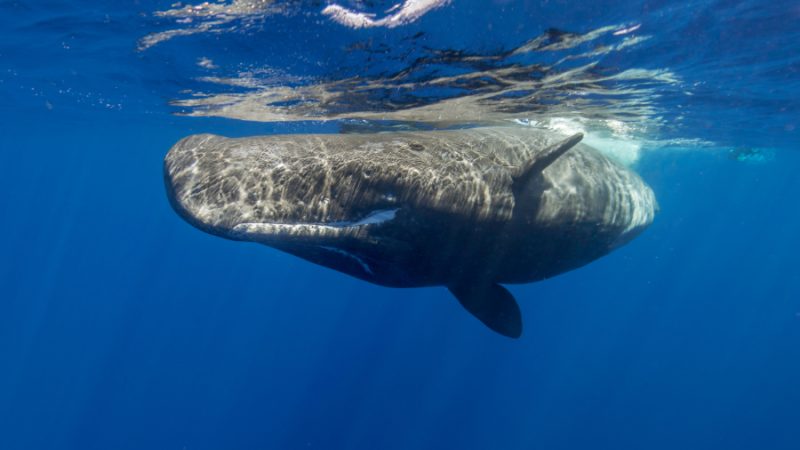It is grey, waxy, smelly and very expensive: Ambra, the worlds rarest organic substance, could only be found in the digestive tract of sperm whales. The compound is highly sought after by the perfume industry due to its fragrance fixative properties and distinctive aroma. Biotechnologists found a new biosynthetic pathway to produce the precursor of Ambra, names Ambrein, exactly as it occurs in nature. The findings could revolutionize the perfume industry by making different products eco-friendly.
Ambra is considered as the rarest, most expensive natural aromatic substance in the world. Depending on its quality, one kilo could cost up to 55.000 Dollars. Due to its quality as a fixative, enabling scents to last much longer, it is highly sought after by the perfume industry.
As a main resource of Ambra serves Ambrein, a Triterpen Alcohol which is formed in the digestive tract of less than five percent of sperm whales. This mostly solid, waxy substance of a dull grey or blackish colour is known to get to the surface and from then into the oceans by vomiting, where it can drift for many years before it is washed onto the shore. By contact with salt water, air and sunlight and through oxidation, the odorous substances Ambrox and Ambrinol are produced, which are responsible for the well-balanced, earthy and rich aroma.
As a result of the natural limitation of Ambra, the high industrial demand as well as the Convention on International Trade in Endangered Species of Wild Fauna and Flora (CITES), prohibiting the trade with endangered species and sperm whale product, Ambra nowadays is chemically synthezised.
Chemical pathways expensive and not efficient
Most pathways of chemical synthesis use diterpenoids from plants as a starting material, e.g. Scareol from S. sclarea, also known as common clary. This method has some huge disadvantages: First, the correct synthesis of these complex molecules is very expensive and effortful. Many individual steps are necessary in order to achieve a yield of only about 4 percent. Moreover, most of these production steps require the controversial use of environmentally unfriendly toxic chemicals, high process temperatures and -pressure. Besides, the synthetic scent lacks of the complex and opulent fragrance mixture. As a result, different high prices perfumes still contain various amounts of natural Ambra.
Green perfume industry
A new biosynthetic pathway could turn these disadvantages to opportunities for environmentally friendly and cheaper products. The Austrian Centre of Industrial Biotechnology (acib) found a way to produce the natural precursor of Ambra, called Ambrein, with a new metabolic pathway in the yeast Pichia pastoris. This means that the scientists are able to display the whole fragrance spectrum of natural ambra in unprecedented quality, large quantities and for the first time. Compared to other enzymatical processes, a new optimized enzyme enables a seventhfold yield, using a simple source of carbon such as glycerol or sugar.
The scientists are now focusing on bringing the patented innovation to industrial scale. The new production pathway has the potential to revolutionize the perfume industry, making it eco-friendly and green.
Moser S, Strohmeier GA, Leitner E, Plocek TJ, Vanhessche K, Pichler H: Whole-cell (+)-ambrein production in the yeast Pichia pastoris. Metab Eng Commun 2018, doi: 10.1016/j.mec.2018.e00077
Picture Credits: Shutterstock
